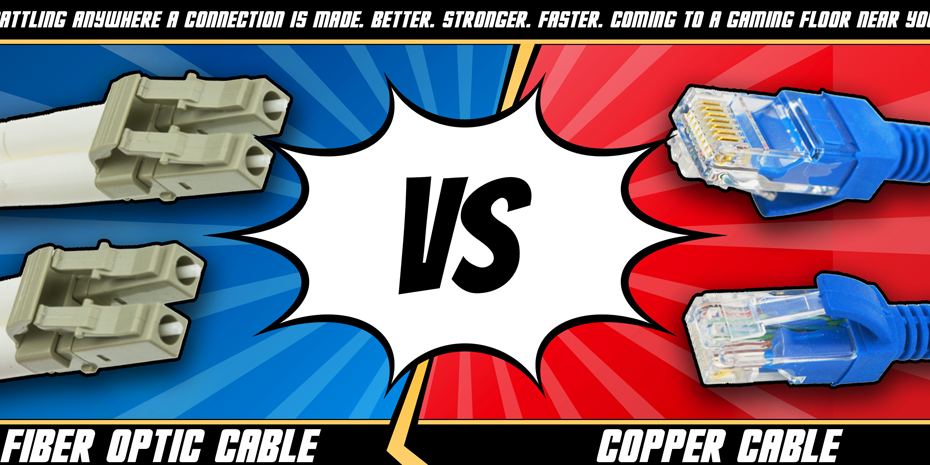Considering gaming floor connectivity, the future has effectively already been here for some time. Serial connections are all but a bygone technology, any vendor worth their salt now supports Ethernet for EGM connectivity.
EGMs are “Electronic Gaming Machines”. To the end-user/patron these are simply the slot machines; there’s a bit more to it in the eyes of the IT or slots teams. The slot machines still have serial connectivity and vendors provide a translator device of sorts to collect the serial data and send it over Ethernet to the servers. Network switches are installed under each bank of slot machines to facilitate the Ethernet connections that each individual EGM requires.
To date, EGMs are like most other client devices on the network; they require copper twisted-pair Ethernet connections, or CAT5/6 in layman’s terms. The network access switch under the bank (bank-switch) provides this connectivity to the EGMs, but how are we up-linking the bank-switch to the distribution layer?…
Fiber or copper?
Fiber connections transmit information by sending pulses of light through optical fiber strands, where Copper connections transmit information by sending electrical signals over twisted pair copper cables. There are a few factors to consider when determining what is appropriate for the gaming floor; namely space consumption, bandwidth, distance, and reliability. Fiber outperforms copper in almost all regards:
Space: Fiber consumes less space than copper in all areas; i.e. patch panel/rack space, cable management/ladders, cable conduits, etc. Thin CAT5/6 cables can be used to help clean up cable management between patch panels and racked devices, but copper structured cabling requires adequate shielding and protection to adhere to strict building codes.
Bandwidth: Fiber provides >10 Gbps throughput where copper is currently capped (with restrictions). EGMs themselves don’t have high bandwidth demands but the number of devices requiring network connectivity on the gaming floor is growing rapidly. So, while this isn’t an immediate concern, it may be in the near future.
Distance: Fiber can transmit light well beyond the current 100m limit of copper’s electrical transmission; this is a strong win for fiber.
Reliability: Given operational characteristics of each cable medium, fiber is significantly less susceptible to environmental variables than copper; e.g. electro-magnetic interference.
All of that said, one potentially massive drawback for fiber is physical resiliency and maintainability. The gaming floor in many environments is extremely dynamic; machines or even entire banks are moved frequently. Quite often this is done in a less-than-delicate manner that copper RJ-45 connections can typically withstand, versus less durable fused strands of fiberglass.
So, what happens when (not if) a bank-switch up-link is broken? Every member of any IT staff should be able to re-terminate a broken or faulty RJ-45 copper connection, even us seasoned engineers with our delicate hands that have only jockeyed keyboards for our recollectable past. However, the same cannot be said for re-terminating a fiber connection, which requires specialty tools, expanded knowledge, and a lot more finesse.
While this is absolutely a major concern, it should not be a deterrent if the proper tools and personnel are available to handle these situations; which should quite honestly become more common-place as we move towards fiber-to-the-client/endpoint.




